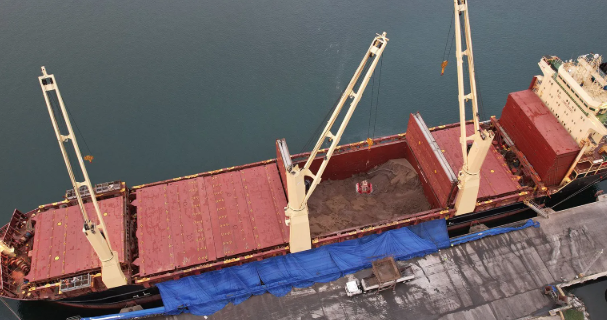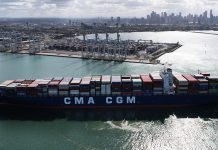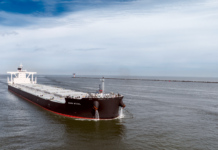
BIMCO anticipates a weakening in the supply-demand balance of the dry bulk market through 2025 and 2026, driven in part by recent changes in US trade policy.

“Since our last update, tariff increases have dampened the economic outlook and heightened uncertainty. As a result, we’ve revised our cargo demand growth forecast down by 0.5 percentage points for both years,” said Filipe Gouveia, Shipping Analysis Manager at BIMCO.
The tariffs imposed by both the United States and China as of April 25 are expected to directly impact around 4% of dry bulk tonne-mile demand.
Minor bulk cargoes are likely to be most affected, as exports to the US could stagnate or decline.
However, China may compensate by sourcing more dry bulk goods from alternative markets, prompting the US to explore new trade destinations as well.
Among commodities, the outlook is especially bleak for iron ore and coal, the two most traded dry bulk goods.
Iron ore shipments are expected to remain flat through 2026, reflecting falling Chinese steel demand amid ongoing challenges in its property sector.
Coal shipments could decline by 2–3% in 2025 and by 1–2% in 2026, driven by accelerating renewable energy adoption and stronger domestic coal production in China and India.

On the supply side, falling freight rates are likely to prompt slower sailing speeds to conserve fuel, which could slow overall fleet supply growth.
Ship demand is projected to remain flat in 2025 and grow modestly by 1–2% in 2026. In contrast, ship supply may rise by 1.5–2.5% in 2025 and 2–3% in 2026.
“With the weaker demand outlook, we expect freight rates in 2025 and 2026 to stay below 2024 levels,” noted Gouveia. “The Panamax segment faces the most pressure, given coal’s dominance in its cargo mix. Meanwhile, limited fleet growth could support relatively stronger rates in the capesize segment.”
Second-hand ship prices may weaken in line with lower freight rates, and newbuilding prices—already down since the start of the year—are unlikely to recover to previous highs anytime soon.
Finally, the ongoing rerouting of vessels via the Cape of Good Hope due to instability in the Red Sea continues to affect the market.
“Our baseline assumes these reroutings will persist through 2026. A full return to the Red Sea would equate to a 2% drop in ship demand, further weakening our projections,” added Gouveia.





